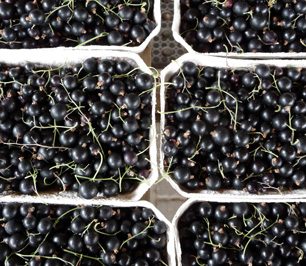Dicofol

Dicofol is used to control mites on blackcurrant and other crops.
Dicofol is an insecticide used to control mites on a variety of vegetable, fruit, ornamentals and field crops. Structurally, it's similar to DDT, the banned pesticide made famous by Rachel Carson's 1962 book Silent Spring.
According to the World Health Organization, humans can potentially be exposed through “pears, blackcurrants and strawberries.” It is not very mobile in the environment and is expected to be found rarely in water, except in the case of large spills or similar disasters.
Health Effects of Dicofol
Dicofol is moderately toxic with acute exposure, with central nervous system symptoms including nausea, dizziness, weakness, and vomiting. Long term exposure can lead to affects on the liver, kidneys, heart, and adrenal glands. It is not believed to be carcinogenic.
Water Treatment for Dicofol
The EPA recommends hydrolysis for the treatment of dicofol. According to the WHO, there is also the possibility that it may also be treatable with activated carbon:
No information is available on removal of dicofol during water treatment. However, the relatively low aqueous solubility and high octanol–water partition coefficient suggest that dicofol should be removed by adsorption onto activated carbon and may possibly be removed during coagulation
Sources: EPA (1), EPA (2), WHO, EXTOXNET, Photo: WikiMedia, author: 3268zauber
Site Index
Filtration Systems
- Aeration for Iron & Sulfide
- Backwashing Filters
(whole house & well units)
- Chlorine & Chemical Injectors
- Countertop Water Filters
- Emergency Filters
- Garden Hose Filters
- Reverse Osmosis, Residential
- Reverse Osmosis, Commercial
- Shower Filters
- Specialty Filters
- Ultraviolet Systems
- Undersink Filters
- Water Softeners
- Whole House Filters
Cartridges
Parts
- Replacement Parts
- Faucets
- Filter Media
- Fittings
- Housings
- O-rings
- Pumps
- Pura UV
- R.O. Parts
- R.O. Tanks
- R.O. Booster Pump
- VIQUA UV